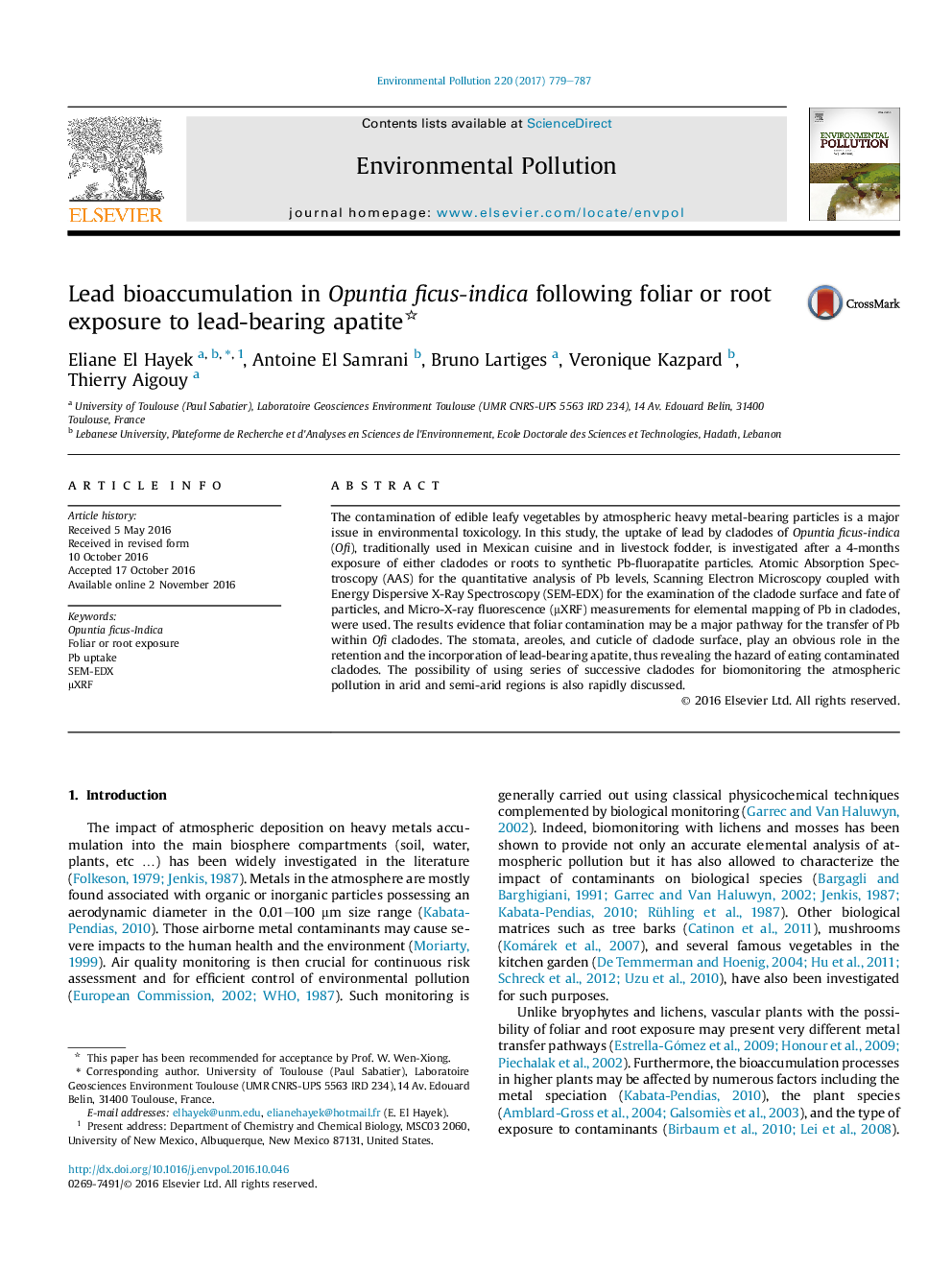| Article ID | Journal | Published Year | Pages | File Type |
|---|---|---|---|---|
| 5749505 | Environmental Pollution | 2017 | 9 Pages |
â¢Opuntia ficus-indica readily bioaccumulates Pb by both foliar and root pathways.â¢The Pb contamination level is significantly higher following foliar exposure.â¢The structure of cladodes surface facilitates the integration of airborne particles.â¢The toxicological risk of Pb accumulation in nopalitos should be emphasized.
The contamination of edible leafy vegetables by atmospheric heavy metal-bearing particles is a major issue in environmental toxicology. In this study, the uptake of lead by cladodes of Opuntia ficus-indica (Ofi), traditionally used in Mexican cuisine and in livestock fodder, is investigated after a 4-months exposure of either cladodes or roots to synthetic Pb-fluorapatite particles. Atomic Absorption Spectroscopy (AAS) for the quantitative analysis of Pb levels, Scanning Electron Microscopy coupled with Energy Dispersive X-Ray Spectroscopy (SEM-EDX) for the examination of the cladode surface and fate of particles, and Micro-X-ray fluorescence (μXRF) measurements for elemental mapping of Pb in cladodes, were used. The results evidence that foliar contamination may be a major pathway for the transfer of Pb within Ofi cladodes. The stomata, areoles, and cuticle of cladode surface, play an obvious role in the retention and the incorporation of lead-bearing apatite, thus revealing the hazard of eating contaminated cladodes. The possibility of using series of successive cladodes for biomonitoring the atmospheric pollution in arid and semi-arid regions is also rapidly discussed.
Graphical abstractDownload high-res image (540KB)Download full-size image
